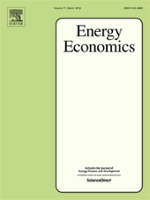It is widely accepted that long-run elasticities of demand for electricity are not stable over time. We model long-run sectoral electricity demand using a time-varying cointegrating vector. Specifically, the coefficient on income (residential sector) or output (commercial and industrial sectors) is allowed to follow a smooth semiparametric function of time, providing a flexible specification that allows more accurate out-of-sample forecasts than either fixed or discretely changing regression coefficients. We fit the model to Korean data over 1995:01-2012:12 for the residential sector and 1985:01-2012:12 for the commercial and industrial sectors. The rapid development of Korea over this period provides a very clear case for allowing the coefficient on income/output to vary over time, but the essential modeling strategy is widely applicable.
Time-varying Long-run Income and Output Elasticities of Electricity Demand with an Application to Korea
Time-varying Long-run Income and Output Elasticities of Electricity Demand with an Application to Korea
- Yoosoon Chang, Kim, Chang Sik, Miller, J. Isaac, Joon Y. Park, Park, Sungkeun
- Publication Date
2014
 The College of Arts
The College of Arts